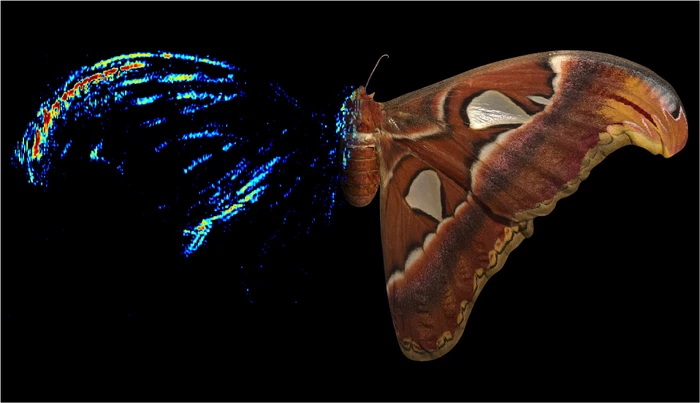Because both bats and moths are nocturnal, bats use echolocation to zero in on the insects when hunting them in the dark. A new study, however, suggests that some moths have evolved special wingtips to avoid becoming a meal.
Past research determined that luna moths sport long, twisted hindwing tail appendages that reflect bats' ultrasonic pulses better than the insects' vulnerable main bodies. This means that bats are drawn to the tip of the tail – which can withstand a bit of damage – as opposed to the body itself.
While silkmoths don't have such elaborate tails, a 2018 University of Bristol study revealed that they do utilize "acoustic stealth" body fur to absorb incoming sound energy, thus keeping bats' ultrasonic pulses from echoing off of them. Now, scientists from that same institution have determined that certain species of silkmoths have specialized forewing-tips that serve the same purpose as the luna moths' tails.
Led by Dr. Thomas Neil, the scientists examined the wings of silkmoths such as the Atlas moth (Attacus atlas) and the Chinese tussar moth (Antheraea pernyi). The researchers found that the tips of the forewings incorporate rippled and folded structures, which serve as hemispheric and corner retroreflectors, respectively. In both cases, this means that they're able to strongly reflect sound coming in from a wide variety of angles, focusing it back to its source.

Utilizing a technology known as acoustic tomography analysis, it was determined that the silkmoths' wingtips serve as an even better "acoustic decoy" than luna moths' long tails. The scientists now plan on observing a variety of live moths being hunted by bats, to see how much of an advantage the wingtip structures actually provide in the real world.
The research is described in a paper that was recently published in the journal Current Biology.
Source: University of Bristol




